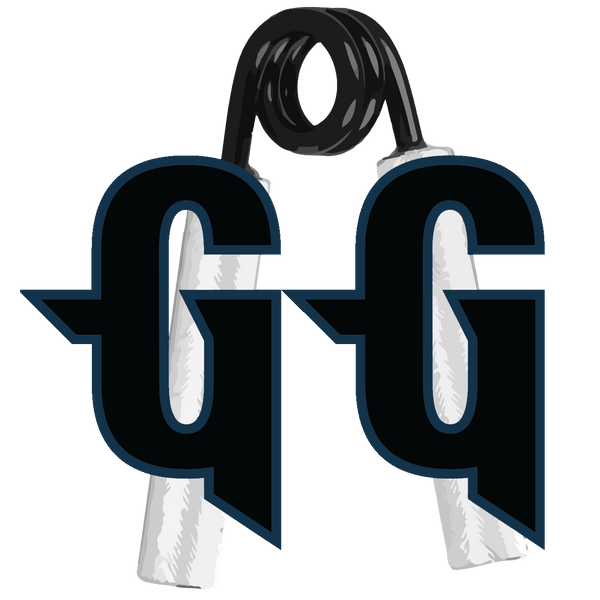
By Robert Tarvid
Introduction To Grip Training
Grip Training is not as basic and simple as it might appear at first glance. It is not only holding different items for different periods of time. There is much more to grip training than that. It consists of a lot of holding, yes, but additionally, grip training consists of multiple other formats as well. Furthermore, you would be surprised by how undervalued hand grip training really is. Improving your grip strength will not only allow and assist you in plenty of other areas of your life, including: Athletics, carrying heavy objects, improving your major lifts, training your grip will grow your forearms and pack them with muscle and veins you did not even know existed. In this definitive guide we will cover all the different types of Grip Training!
Grip training can be partitioned into multiple different types. There are three main forms of gripping:
- Crushing grip
- Pinch grip
- Open-hand grip
Additionally, grip training also contains other forms of training which do not necessarily involve gripping:
- Wrist training
- Extensor training
In this article I will describe all of the different forms of grip training and discuss its applications.
Crushing grip
The most famous and popular form of grip training is the crushing grip. The crushing grip is extremely famous due the high status of heavy hand grippers and the athletes that have closed them. Crushing grip is primarily developed with hand gripper training. There are almost no other alternatives for developing this grip. However, according to the words of many experience grip athletes, hand grippers are somewhat of a waste of time, as they are not directly applicable to real-life situations. Although I will agree that hand grippers model very few real-life grip situations, I would disagree that they are a waste of time, for multiple reasons. Firstly, they are good for developing overall grip strength and switching things up to prevent accommodation and maximize the training effect. In my personal experience, it is good for building up wrist tendons to make them bigger and stronger, although I cannot guarantee that everyone will experience this effect. Some great products for crushing power are the Grip Gauntlet Hand Grippers and the Mini Grip Gauntlet Hand Gripper. Hand Gripper training needs to be approached at a specific angle. Unfortunately, the ins and outs of hand gripper training will not be discussed in this post.
Pinch Grip Training
Pinch grip is a less famous and less well-known form of grip training, however, it is very applicable to numerous real-life scenarios and is very good for developing overall strength. Pinch grip training is very useful for many sports, including, but not limited to, combat sports (especially where there is a Gi, like Judo and BJJ), racket sports, track and field, volleyball, basketball, handball, rugby, and many others. Pinch grip can be trained either by lifting objects with a pinch grip, or by pinching together grippers. Ed Coan, one of the greatest powerlifters of all time, recommended training hands and fingers by pinching paper clamps.
Open-hand Grip Training
Open-hand grip is a somewhat broad term, as the main form of open-hand training is thick bar training. Thick bar training has been praised by numerous grip training experts for how good it is at overall grip development. Thick bar training has has gotten lots of attention in recent times, mainly due to the rising popularity of fat grip attachments and the Inch Dumbbell. Thick bar training is extremely effective for developing overall grip strength in all kinds of athletes. Thick bar attachments are used by bodybuilders for additional forearm gains. I strongly recommend the Grip Gauntlet Gripz for thick bar training.
Open-hand training formally also includes rock climbing grips and training.
Wrist Training
Although it is not a direct form of grip training, wrist training is very popular and is very effective for increasing grip and wrist strength and building big and strong forearms. Wrist training is done in very large volumes by armwrestlers and also by bodybuilders. Wrist training is highly useful for athletes, as weaknesses in the wrist can affect efficiency of movements and create power leaks. Wrist training is also very good for forearm hypertrophy, as it is a very direct form of training for the forearm muscles.
Crimp/Extensor Training
Extensor training is an often overlooked component of grip training, however, it is highly important for developing a balanced grip and remaining injury free. Extensor training is mainly performed using finger crimp training bands. Grip Gauntlet Crimp Training Bands are a popular choice both for athletes and enthusiasts. However, there are a few other unconventional methods of training. One of them is the sand/rice bucket. With correct usage, the sand can create enough resistance to effectively train the extensor muscles. Extensor training is extremely important due to the imbalance created by over-training the flexor muscles of the forearms. When this occurs, issues such as Golfer's Elbow might arise, to avoid that, crimp training must be added to your hand grip training routines.
Overall, we can see that grip training in its various forms is useful for athletes in virtually all sports and disciplines, both for improving performance and staying balanced and injury-free.

